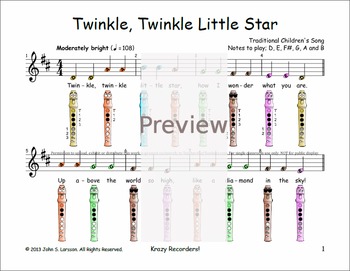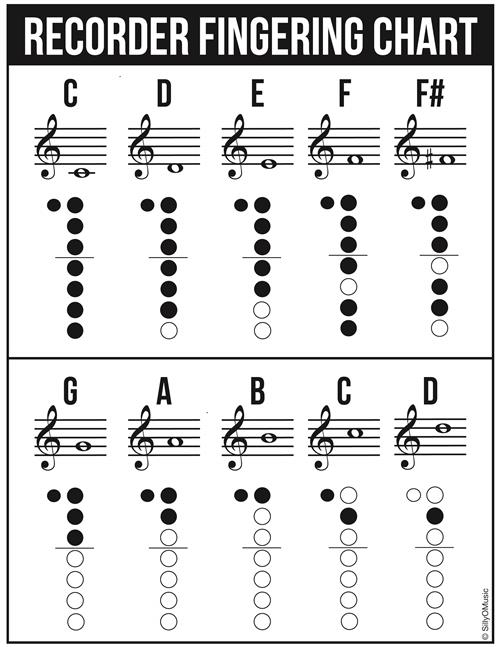

You needn’t rush to increase the tempo, so you can focus on your playing skills alone.
#Simple recorder fingering chart how to#
If you know how to play a song and can “feel it out” on your recorder, that’s wonderful - it means you have a natural musical instinct.

Adults may learn to play reasonably well in as little as a couple of months.įinally, recorder enthusiasts should learn how to read sheet music. In young children, it can take years to develop the coordination required to play. Learning the recorder, along with any other instrument, requires time, effort, and dedication. Practice blowing with different levels of force to find the right level for your recorder.Īnother important tip while learning to play the recorder is not to force things. It’s common for newbies to blow too hard, thus producing a harsh, unprofessional sound. Unlike other woodwinds, beginners should note that the recorder does not require a strong burst of air to work. Recorders aren’t commonly used in modern pop music, so if you want to learn to play, you’re better off looking back at nursery rhymes, classical songs, and folk ballads. Even the famed musician James Dean played the recorder. In fact, many adults love and use the recorder regularly. However, adults and children alike have played the recorder since the fourteenth century. On a practical basis, you may never use these flute fingerings, but they certainly prove useful as a learning instrument to help you develop a better breath support.Many people think of recorders as children’s instruments. These higher notes are extremely difficult to obtain, as they take a lot of air support and can sound like the most horrible shrieking noise you've ever heard. However, fingerings for higher notes do exist. Standard orchestral repertoire for the modern flute never goes beyond D 7.

The fingering chart for the Modern Flute follows. When practicing scales, favor the right index fingering, as it is the most awkward one.In passages featuring this note, you should normally finger A#/Bb using your right index finger. This is the F# 6/Gb 6 in the high register. Apart from the B-naturals, there is just one other note whose emission is hindered by the thumb lever:.You can keep the thumb lever depressed through the whole piece and play all the Bs without worrying about them being flat. This is often the case in pieces with a key signature that presents one to five flats: if the piece has no chromatic passages, Is best used in passages without any B-natural, as you can keep the thumb lever depressed all the way through without preventing the other notes from coming out. The fingering which makes use of the Bb thumb lever (also known as the Briccialdi lever, after Italian flutist Giulio Briccialdi).Here are the main principles you should consider when deciding which fingering to use: In this fingering chart we have listed both, since they are of equal importance. In the first and second register, there are actually two basic fingerings commonly used to produce these notes. Which allows the B tone hole to close without closing the C and C# holes. This is possible thanks to the gizmo key, Most notably of the high C way above the staff (C 7). This footjoint, which is not usually found on student models, is a bit longer than the classic C foot, and features two rollers instead of one.īesides allowing the production of low B, the B foot also facilitates the emission of some higher notes, The lowest note, the B below the staff (B 3), is only playable on flutes with the so-called B foot. We won't list these special fingerings on this page, but if you are interested you can find some of them here. While these basic fingerings work on the piccolo, for many notes alternate fingerings exist that are better suited to be used in particular passages, as they can make it easier to produce a good tone or can be better in tune. Which are also valid for the other instruments of the family: the piccolo, the alto flute, the bass flute, etc. In the following fingering chart we have listed all the basic fingerings for the Boehm-system flute,


 0 kommentar(er)
0 kommentar(er)
